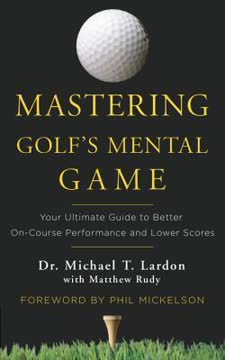Key Takeaways
1. Mastering the Mental Game: The Pre-Shot Pyramid
Simply put, I help people under pressure think better.
The Pre-Shot Pyramid is a mental framework consisting of six components: attitude, motivation, control, optimization, concentration, and planning. These elements work together to create a focused, clear mindset before each shot.
- The Pyramid is applicable to all skill levels, from tour professionals to high-handicap amateurs
- It helps players transition from logical shot selection to creative execution
- The ultimate goal is to reach a state of "know mind," where execution becomes instinctive and effortless
By mastering the Pre-Shot Pyramid, golfers can consistently perform at their best, regardless of external pressures or circumstances.
2. Attitude: The Foundation of Peak Performance
You can change the way you feel and act by changing the way you think, even if your external environment doesn't change.
Growth mindset vs. fixed mindset. A growth mindset, believing that abilities can be developed through dedication and hard work, is crucial for improvement in golf and life. Players with a growth mindset:
- View challenges as opportunities for learning
- Persist in the face of setbacks
- Embrace effort as a path to mastery
Conversely, a fixed mindset, believing that talents are innate and unchangeable, can lead to:
- Avoiding challenges
- Giving up easily
- Feeling threatened by others' success
Developing a growth mindset is key to unlocking your full potential on and off the golf course.
3. Harnessing Motivation: Finding Your Passion
Internal, tertiary motivation always trumps external, secondary motivation.
Three types of motivation:
- Primary: Basic survival instincts (fear, hunger)
- Secondary: Learned behaviors (rewards, punishments)
- Tertiary: Intrinsic passion and creativity
The most powerful and sustainable motivation comes from within – the sheer love of the game. To reconnect with your passion:
- Reflect on why you started playing golf
- Create enjoyable practice routines
- Focus on personal improvement rather than external rewards
By tapping into your intrinsic motivation, you'll find greater enjoyment and sustained performance in golf.
4. Emotional Control: Managing Fear and Anxiety
You can choose how and what you think, which means you can choose how and what you feel.
Strategies for emotional control:
- Recognize that fear on the golf course is an overreaction
- Use breathing techniques to engage the vagus nerve and reduce anxiety
- Develop a consistent pre-shot routine to create a psychological bubble
Practice thought substitution by replacing negative or technical thoughts with calm, neutral ones. For example:
- Instead of "Don't hit it in the water," think "Nice and easy"
- Replace "Keep your left arm straight" with "Smooth rhythm"
By managing your emotions effectively, you can maintain focus and perform at your best under pressure.
5. Optimizing Your Thoughts: Reframing Negative Self-Talk
Thought substitution is one of the most valuable tools in your arsenal, and a huge help as you make your way through the Pre-Shot Pyramid.
Cognitive Behavioral Therapy (CBT) techniques can help golfers reframe negative thoughts and improve performance:
- Identify negative self-talk
- Challenge the validity of these thoughts
- Replace them with realistic, positive statements
Example reframes:
- "I always choke under pressure" → "I've succeeded under pressure before and can do it again"
- "I'm terrible at putting" → "My putting is improving with practice"
By consistently reframing negative thoughts, you can build confidence and resilience on the golf course.
6. Concentration: Balancing Focus and Relaxation
You're conserving your focus "equipment" so that it can be used most effectively throughout the whole round.
Four dimensions of focus:
- External narrow (e.g., ball at address)
- External broad (e.g., overall course strategy)
- Internal narrow (e.g., feeling a specific swing thought)
- Internal broad (e.g., assessing your emotional state)
To maintain concentration throughout a round:
- Use narrow focus during shots
- Switch to broad focus between shots
- Alternate between external and internal focus as needed
This "pulsing" of attention helps conserve mental energy and maintain peak performance over 18 holes.
7. Goal Setting: The Roadmap to Improvement
Activity doesn't equal progress.
Effective goal setting:
- Combine process-oriented and results-oriented goals
- Set short-term, mid-term, and long-term objectives
- Make goals specific, measurable, and challenging yet attainable
Create a goal-setting matrix:
- Identify result goals (e.g., reduce handicap by 3 strokes)
- Determine process goals to achieve each result (e.g., practice putting for 30 minutes daily)
- Set timeframes for each goal
Regularly review and adjust your goals to maintain motivation and track progress.
8. Visualization: Bringing Imagination to Life
Creating an image in your mind before you play has real performance benefits in neurological terms.
Two types of mental imagery:
- Visual: Creating a mental "movie" of the desired shot
- Kinesthetic: Focusing on the feel of the perfect swing
To improve visualization:
- Practice both visual and kinesthetic imagery
- Engage all senses in your mental rehearsal
- Use imagery during practice and on the course
Experiment with different visualization techniques to find what works best for you. Consistent practice will strengthen your ability to execute shots as imagined.
9. The Mental Scorecard: Measuring Progress Beyond Strokes
You get to have it both ways!
The Mental Scorecard system allows golfers to:
- Satisfy the need for results-oriented feedback
- Stay process-oriented during play
How it works:
- Rate your mental approach on each shot (1 point for completing all three steps of the Pre-Shot Pyramid, 0 for incomplete)
- Calculate your mental score as a percentage (total points / total shots)
- Track trends in your mental performance over time
A good mental score correlates with a good real score 85-90% of the time. By consistently improving your mental score, you'll likely see parallel improvements in your handicap and overall performance.
Last updated:
FAQ
1. What is "Mastering Golf's Mental Game" by Dr. Michael T. Lardon about?
- Comprehensive mental guide: The book is a step-by-step guide to improving your mental approach to golf, aiming to help players of all levels lower their scores and enjoy the game more.
- Focus on mental skills: Dr. Lardon, a sports psychiatrist, shares techniques and systems developed from decades of working with elite athletes, including PGA Tour pros.
- Practical system: The core of the book is the Pre-Shot Pyramid and the Mental Scorecard, which help golfers structure their thinking before every shot.
- Universal application: While rooted in golf, the mental strategies are applicable to other sports and high-pressure situations in life.
2. Why should I read "Mastering Golf's Mental Game" by Dr. Michael T. Lardon?
- Proven results: The methods have been used by top professionals like Phil Mickelson to achieve major victories and overcome setbacks.
- Actionable exercises: The book is filled with practical, easy-to-follow exercises and case studies that can be applied immediately.
- Addresses all skill levels: Whether you’re a tour pro or a weekend golfer, the system is designed to be effective for any handicap.
- Focus on enjoyment: Beyond performance, the book emphasizes increasing your enjoyment and satisfaction with the game.
3. What are the key takeaways from "Mastering Golf's Mental Game" by Dr. Michael T. Lardon?
- Six Components of Mental Excellence: Attitude, Motivation, Control, Optimization, Concentration, and Planning are the building blocks for mental performance.
- Pre-Shot Pyramid: A repeatable, learnable process for approaching every shot, integrating both logical and creative thinking.
- Mental Scorecard System: A unique method for tracking your mental execution on the course, independent of your physical score.
- Process over results: Shifting focus from outcome to process leads to better performance and more consistent improvement.
4. How does the Pre-Shot Pyramid work in "Mastering Golf's Mental Game" by Dr. Michael T. Lardon?
- Three-step process: The Pyramid consists of Calculate (logical shot planning), Create (visualizing or feeling the shot), and Execute (swinging with a clear, focused mind).
- Integrates both brain hemispheres: Uses left-brain logic for planning and right-brain creativity for visualization and feel.
- Repeatable routine: Encourages a consistent pre-shot routine to manage nerves, focus, and decision-making.
- Adaptable to all players: The process is scalable to any skill level, making it accessible for amateurs and pros alike.
5. What is the Mental Scorecard System in "Mastering Golf's Mental Game" by Dr. Michael T. Lardon?
- Parallel to physical score: In addition to your regular scorecard, you track whether you completed your mental process for each shot.
- Objective measurement: Each shot is scored as a 1 (process completed) or 0 (process not completed), regardless of the shot’s outcome.
- Focuses on process: Shifts attention from results to the quality of your mental approach, reinforcing good habits.
- Correlates with improvement: Higher mental scores are strongly linked to better physical scores and lower handicaps.
6. What are the Six Components of Mental Excellence in "Mastering Golf's Mental Game" by Dr. Michael T. Lardon?
- Attitude: Your mindset, self-confidence, and openness to learning.
- Motivation: Understanding what drives you—fear, reward, or passion—and how to harness it.
- Control: Managing emotions like fear, anger, and anxiety to stay focused and composed.
- Optimization: Using positive thought cycles and reframing negative thoughts to enhance performance.
- Concentration: Mastering different types of focus (narrow/wide, internal/external) and knowing when to use each.
- Planning: Setting clear, actionable goals and building routines to achieve them.
7. How does "Mastering Golf's Mental Game" by Dr. Michael T. Lardon help golfers handle pressure and nerves?
- Pre-shot routine: Emphasizes the importance of a consistent routine to create a psychological bubble and reduce anxiety.
- Breathing techniques: Introduces yogic breathing and heart rate variability training to calm nerves before and during play.
- Emotional management: Offers strategies for channeling fear and anger productively, rather than letting them disrupt performance.
- Perspective and acceptance: Encourages players to accept bad shots and focus on response rather than outcome.
8. How does "Mastering Golf's Mental Game" by Dr. Michael T. Lardon address motivation and burnout?
- Three types of motivation: Explains primary (survival/fear), secondary (learned rewards), and tertiary (passion/creativity) motivation.
- Reconnecting with passion: Provides exercises and case studies to help players rediscover their love for the game.
- Perspective shifts: Suggests changing routines, playing formats, or goals to reignite interest and enjoyment.
- Balancing external and internal drivers: Teaches how to use both fear and passion as productive fuels for improvement.
9. What practical exercises and homework does "Mastering Golf's Mental Game" by Dr. Michael T. Lardon provide?
- Self-assessment: Tools to evaluate your mindset, motivation, and process vs. results orientation.
- Thought journaling: Techniques for reframing negative self-talk and tracking progress.
- Pre-shot routine practice: Step-by-step guides to building and refining your own routine.
- Goal-setting matrix: Templates for setting and tracking both process and results-oriented goals.
10. How does "Mastering Golf's Mental Game" by Dr. Michael T. Lardon use case studies and real-world examples?
- Tour player stories: Shares detailed accounts of PGA and LPGA pros overcoming mental barriers and achieving breakthroughs.
- Amateur parallels: Illustrates how the same mental challenges and solutions apply to club golfers and recreational players.
- Diverse sports: Draws on experiences from other sports (e.g., table tennis, show jumping) to reinforce universal mental principles.
- Actionable lessons: Each case study is paired with specific takeaways and exercises for the reader.
11. What are the best quotes from "Mastering Golf's Mental Game" by Dr. Michael T. Lardon and what do they mean?
- “Simply put, I help people under pressure think better. I help them find ‘The Zone.’” — Emphasizes the book’s core mission: teaching mental skills for peak performance.
- “Perfectly executed means perfectly executed for you.” — Stresses that mental excellence is relative to your own ability, not someone else’s.
- “You can choose how and what you think, which means you can choose how and what you feel.” — Highlights the power of cognitive reframing and self-control.
- “Control breeds confidence, and confidence breeds good play.” — Underlines the importance of mastering your mental process to unlock your best golf.
12. How can I implement the advice from "Mastering Golf's Mental Game" by Dr. Michael T. Lardon into my own golf routine?
- Start with self-assessment: Use the book’s tools to evaluate your current mindset, motivation, and focus.
- Build your Pre-Shot Pyramid: Develop and practice a consistent pre-shot routine using the three-step process.
- Track your mental performance: Use the Mental Scorecard alongside your regular scorecard to monitor progress.
- Set and review goals: Regularly update your goal-setting matrix and adjust your practice and play accordingly.
- Practice regularly: Integrate the book’s exercises into your practice sessions and rounds, revisiting them every few months for continued growth.
Review Summary
Mastering Golf's Mental Game receives mostly positive reviews, with readers praising its practical approach to improving mental performance in golf. Many find the Mental Scorecard concept particularly helpful. Some readers note the book's repetitiveness and occasional lack of depth. Overall, reviewers appreciate the focus on the mental aspects of golf and report improvements in their game after applying the techniques. The book is seen as accessible and motivating, though a few suggest it may be overwhelming for beginners.
Similar Books
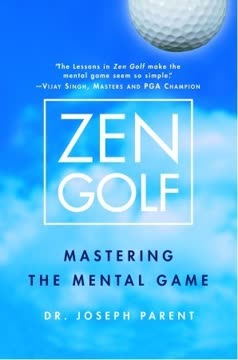
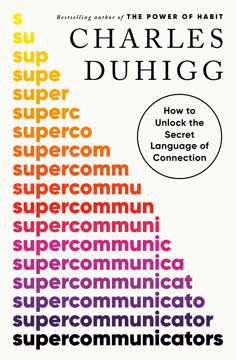


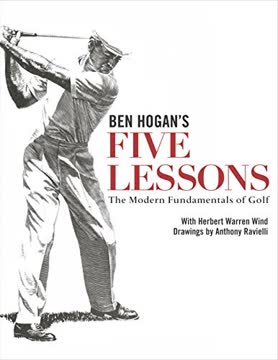


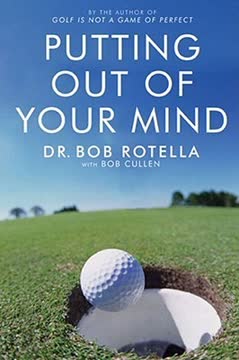


Download PDF
Download EPUB
.epub digital book format is ideal for reading ebooks on phones, tablets, and e-readers.
